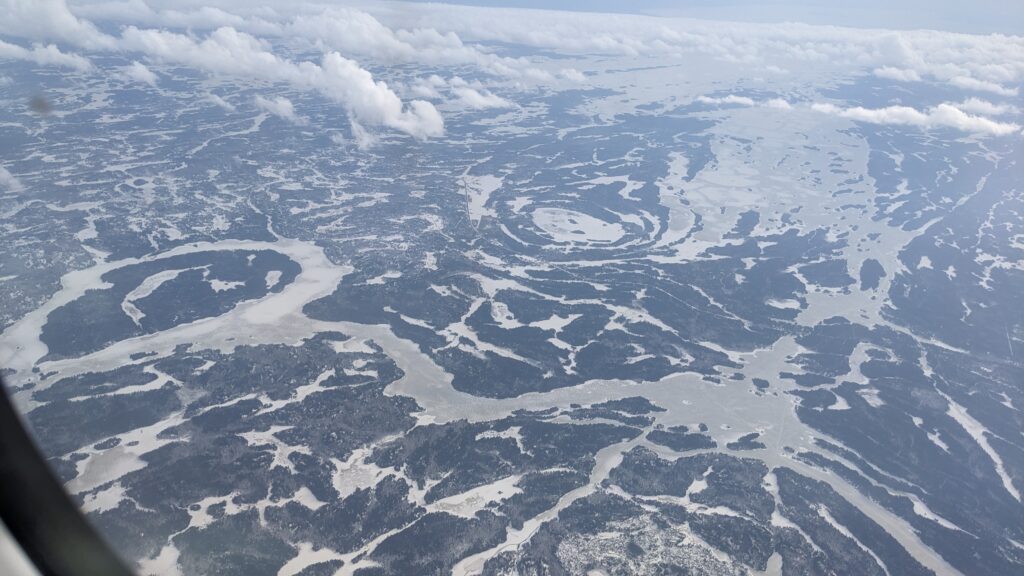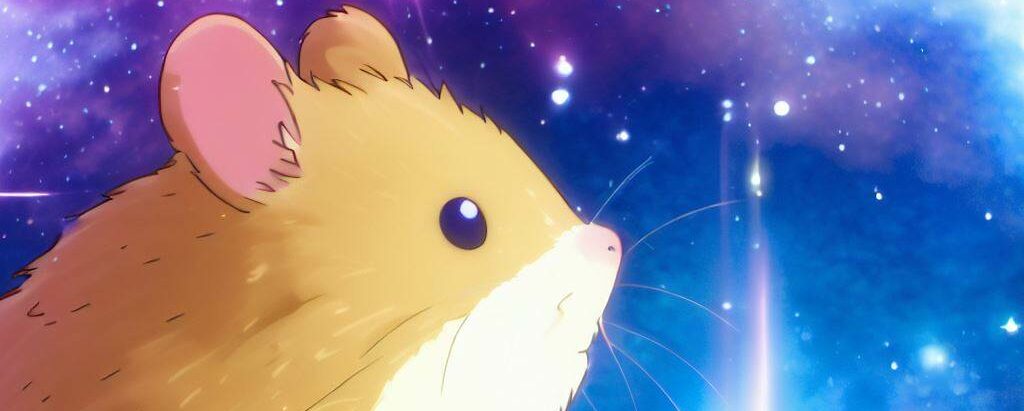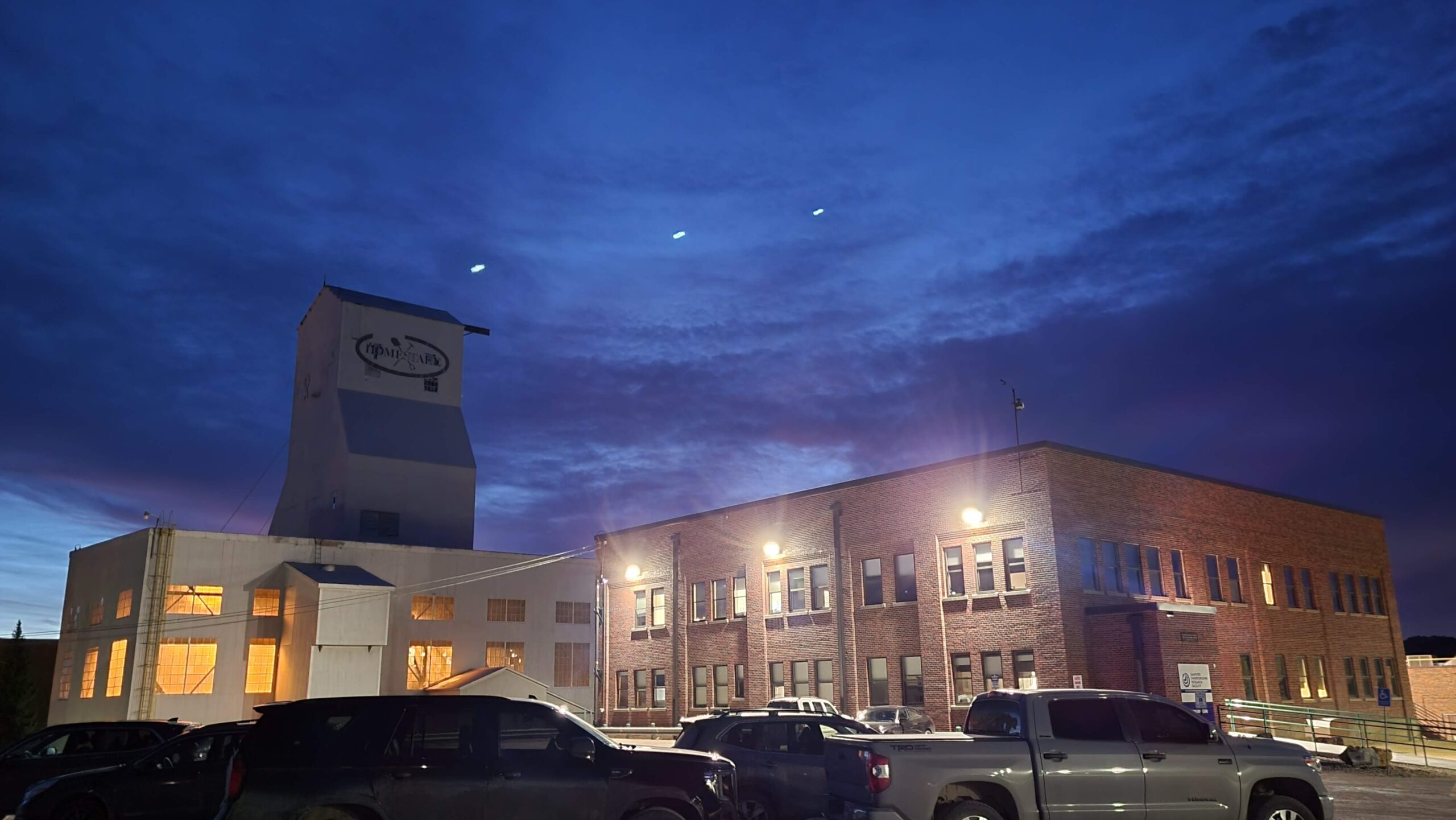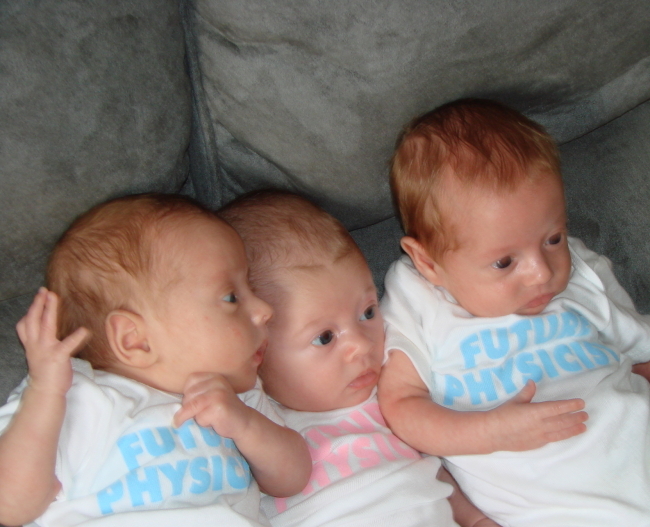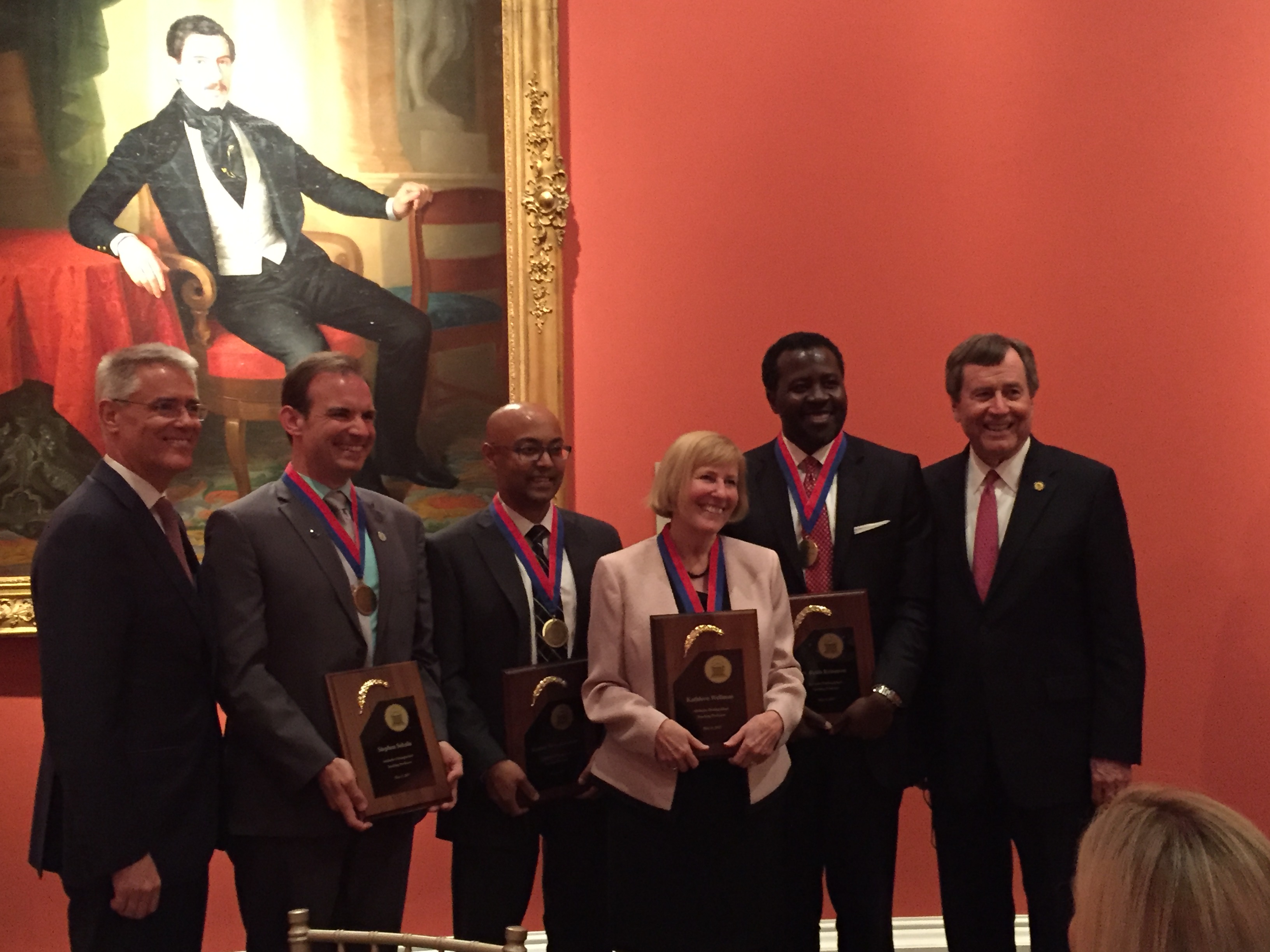In October 2023, I had the great pleasure to journey from Sudbury to Modane, France to participate in a workshop at the Modane Underground Laboratory (Laboratoire Souterrain de Modane, or LSM). That was an incredible work period and a great chance to visit the underground laboratory, which is a “horizontal access” (meaning you can drive into it) facility sited under a mountain.
The week of March 10, 2025, I journeyed from Sudbury to Lead, South Dakota, USA to visit the Sanford Underground Research Facility (SURF) and deliver a public lecture, or “Deep Talk”. This was also an incredible visit, a chance to learn and to find common ground between underground labs on which to build and enhance relationships. This feels like a once-in-a-century moment to use science to build connections and strengthen ties, and I reflect on this journey while sharing images from the trip below.
Arriving in Lead
Getting to Lead from Sudbury was a two-day journey. One flies from Sudbury to Toronto, then I connected to Denver through to my final airport destination: Rapid City, South Dakota. I over-nighted there, since I arrived in the evening, then drove the hour from Rapid City to Lead. One follows Interstate 90 and then exits on a series of mountain highways that climb up to Lead.
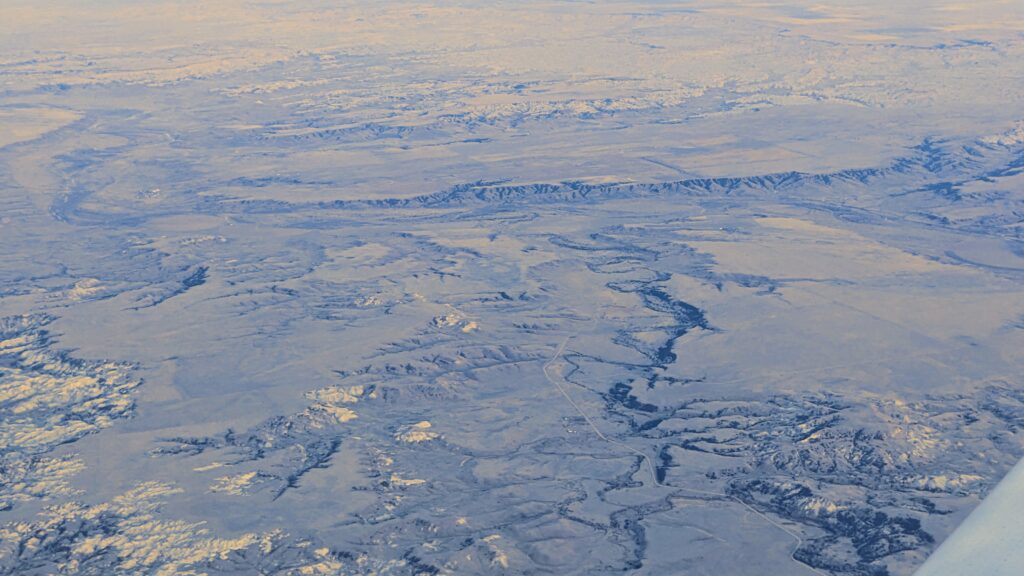
The flight into Rapid City takes you over what are called “The Badlands” (mako sica from the original Lakota name for the region), but which are, in fact beautiful. I have a soft spot for high desert country, one forged from time in New Mexico. I very much share the sentiment expressed by J. Robert Oppenheimer, whose heart was in the high desert lands of New Mexico (the first and, likely, the only place he ever felt relaxed and at home): “My two great loves are physics and New Mexico. It’s a pity they can’t be combined.”
Lead combines these two things, not for the purpose of weaponizing an idea but instead to educate people in science and to facilitate basic inquiry into the structure of the entire cosmos.

Touring the Underground Laboratory
After a day of engagement between the science, education and outreach, and user support teams of SNOLAB and SURF, we arrived early at SURF the next morning for a tour of the underground facility.
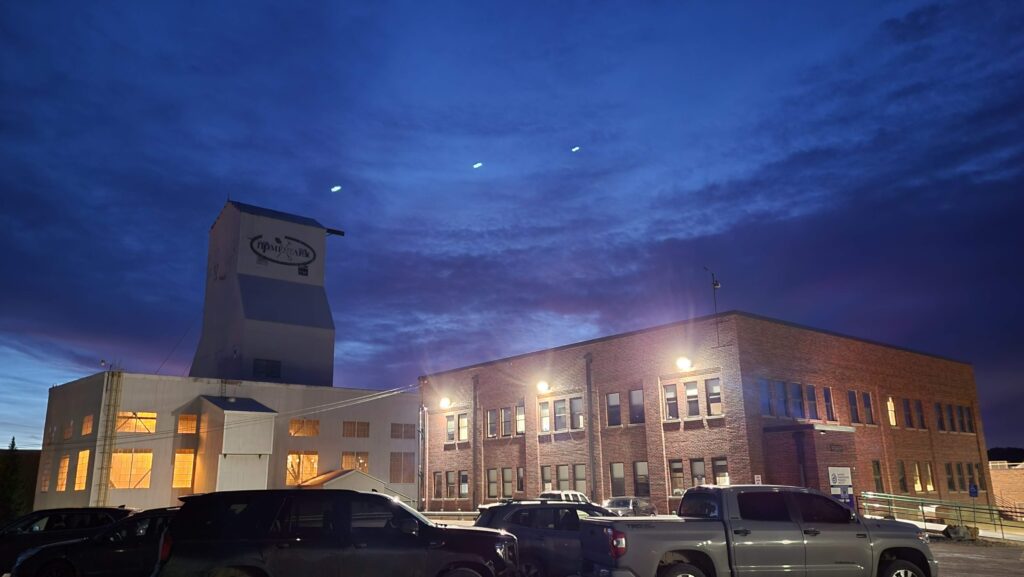
The primary shift work cage goes underground at 06:30, so we stayed out of peoples’ ways while we got outfitted with personal protective equipment (PPE). I did a quick interview with the communications team at SURF regarding the science need to put quantum computing technology underground, and then we boarded the 07:30 cage. We arrived at the bottom of the Yates Shaft (vertical tunnel) into a region known as the Davis Campus of the laboratory. Specifically, we stepped out of the cage into a part of the laboratory known as the “Big X”, as it is a major intersection of two primary drifts (horizontal tunnels). Our first task was to hop on an electric tram and head to the Ross Shaft area, about 1 mile away.
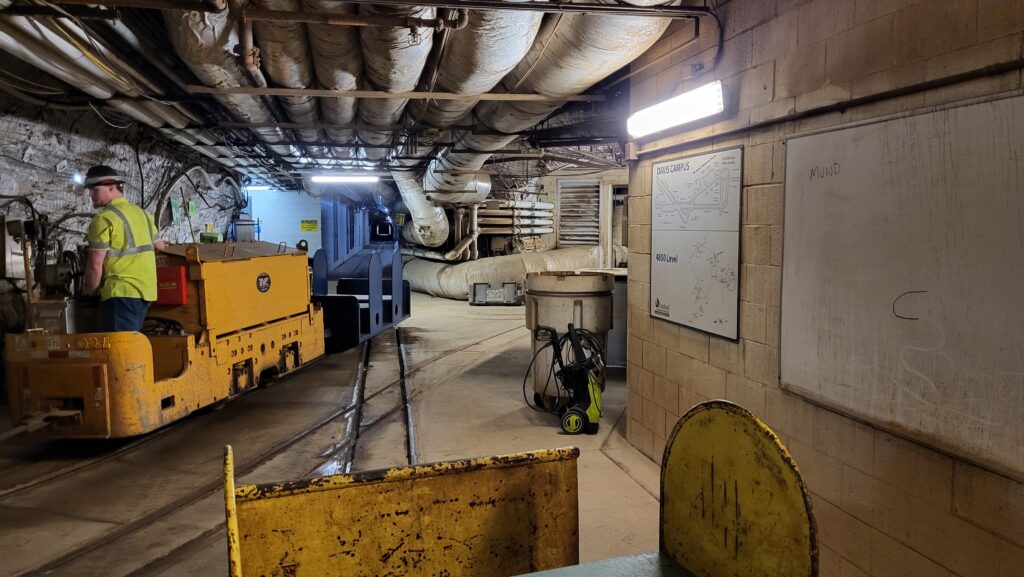
The Long Baseline Neutrino Facility
The Ross Campus is home to the Long Baseline Neutrino Facility, or LBNF. This is a laboratory space, primary composed of two massive caverns, that will eventually host the Deep Underground Neutrino Experiment, or DUNE.
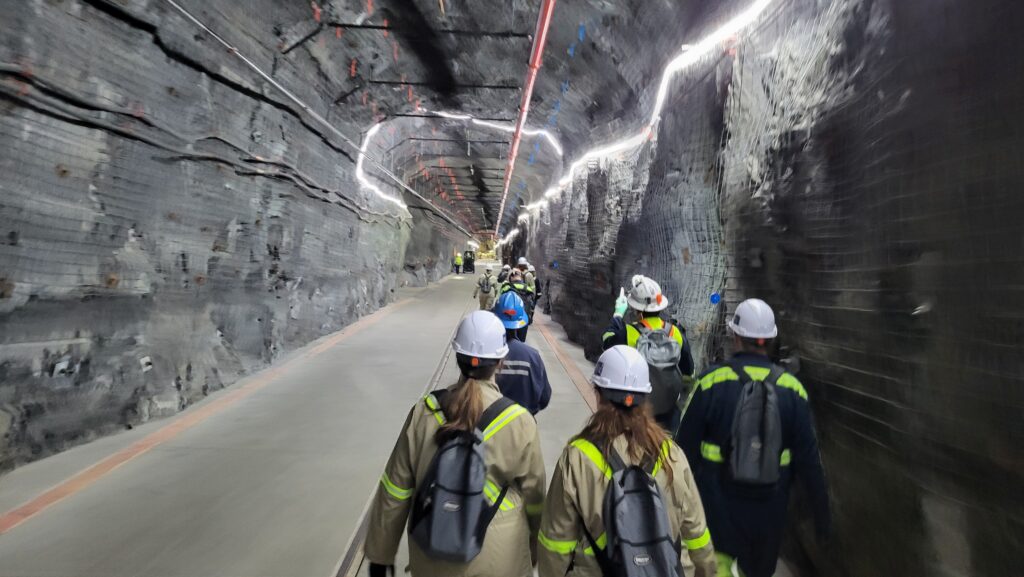
The drifts in this space are MASSIVE. This is because large volumes and lengths of equipment will have to come through these drifts to be assembled into DUNE. The host caverns for DUNE are two even-more-massive spaces, each about 130m (1.5 American Football fields) long and many stories high. 800,000 tones of rock was removed to make these caverns. The rock was relocated on the laboratory site to keep the land on the land.
We also explored other newer drifts that are still under construction. These can serve as access points to future expansions spaces. Those spaces could attract other, novel, large-scale particle detector systems intended to detect ultra-rare phenomena, like dark matter interactions.
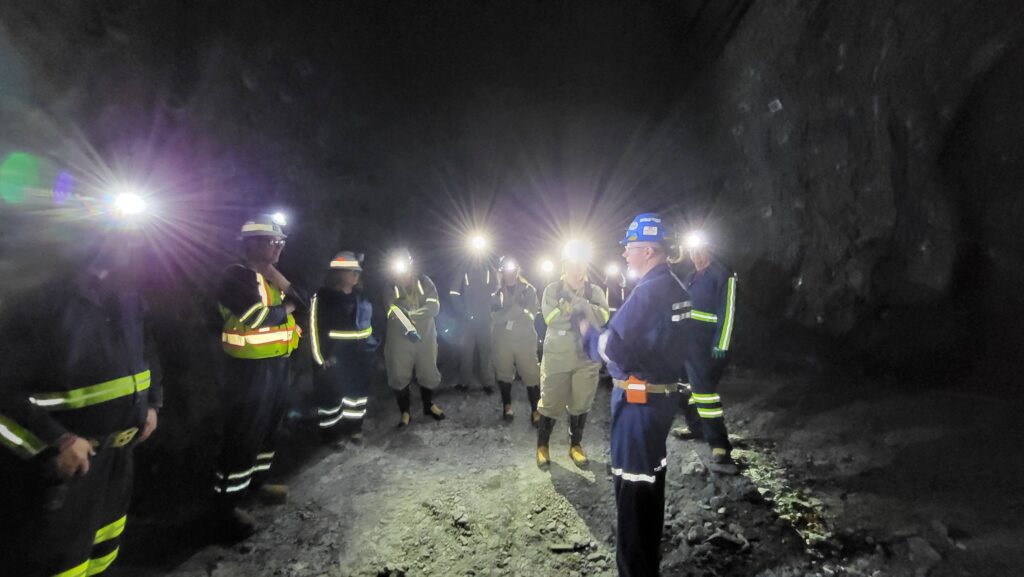
The Ross Campus is also home to novel equipment like CASPAR, an underground particle accelerator. Shielded from confounding background radiation on the surface, an underground accelerator can probe low-energy nuclear interactions like those that happen at the hearts of stars.
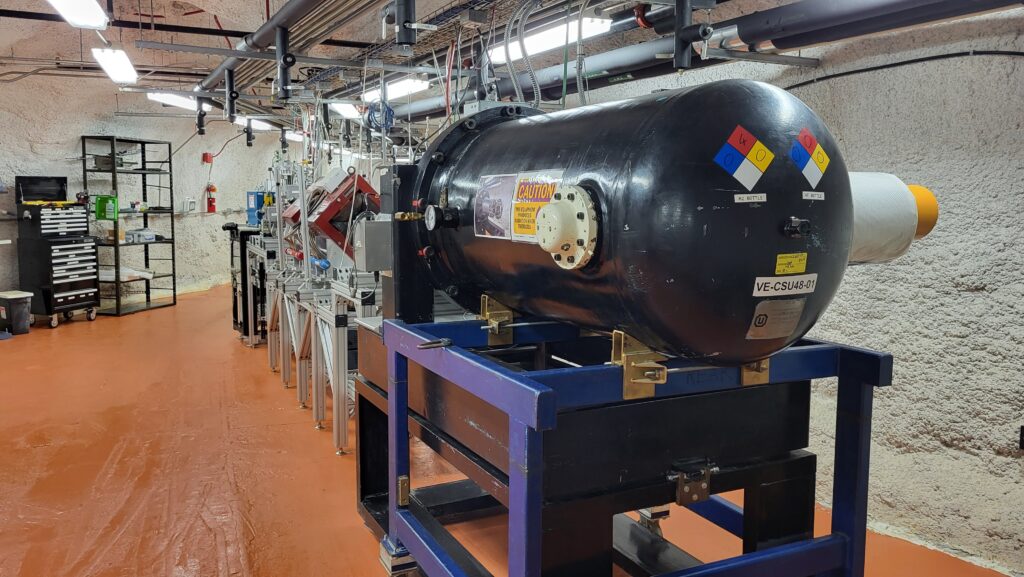
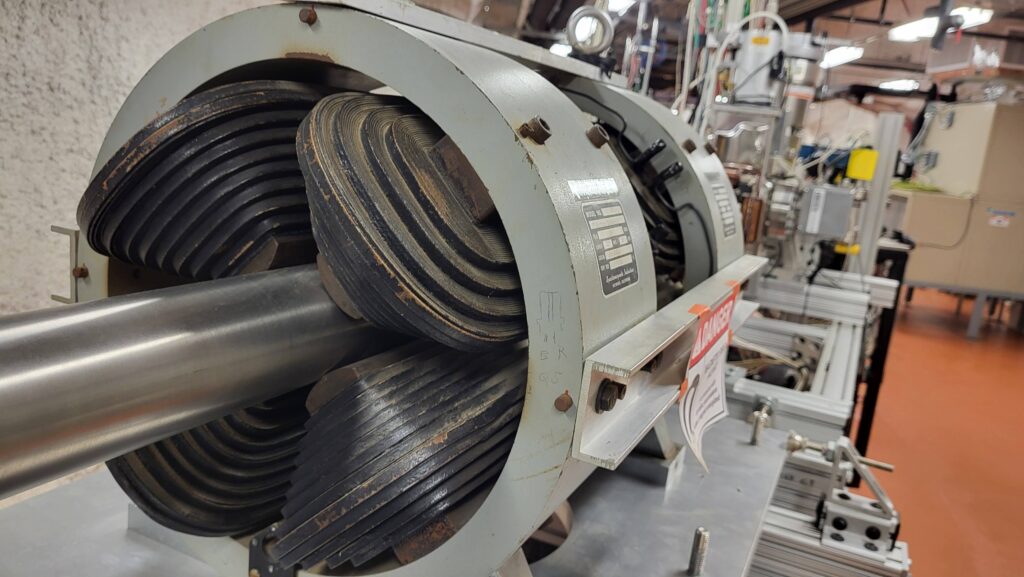
The Davis Campus
We trammed back to the Yates Shaft and toured the Davis Campus. In addition to visiting their cleanroom spaces and seeing the LZ (LUX-ZEPLIN) dark matter detector, we walked past a piece of the historical Ray Davis Homestake Experiment. This was the first experiment located in what, then, was the Homestake Gold Mine.
The Homestake experiment ran for decades, driven primarily by the passion and determination of Ray Davis, who became a pioneering astrochemist and helped found the new field of astroparticle physics. His experiment detected a deficit in electron-type neutrinos coming from the sun and for decades was met with skepticism from the larger community.
That skepticism melted starting in 1998 when the Super-Kamiokande experiment, and then shortly thereafter the Sudbury Neutrino Experiment, confirmed the observations and discovered that solar electron neutrinos were morphing into other kinds of neutrinos. The solar neutrino output was as predicted, but neutrinos themselves evolve from one kind to another. This was Nobel-Prize-winning work, and I was excited to be photographed next to the historical marker for the experiment.
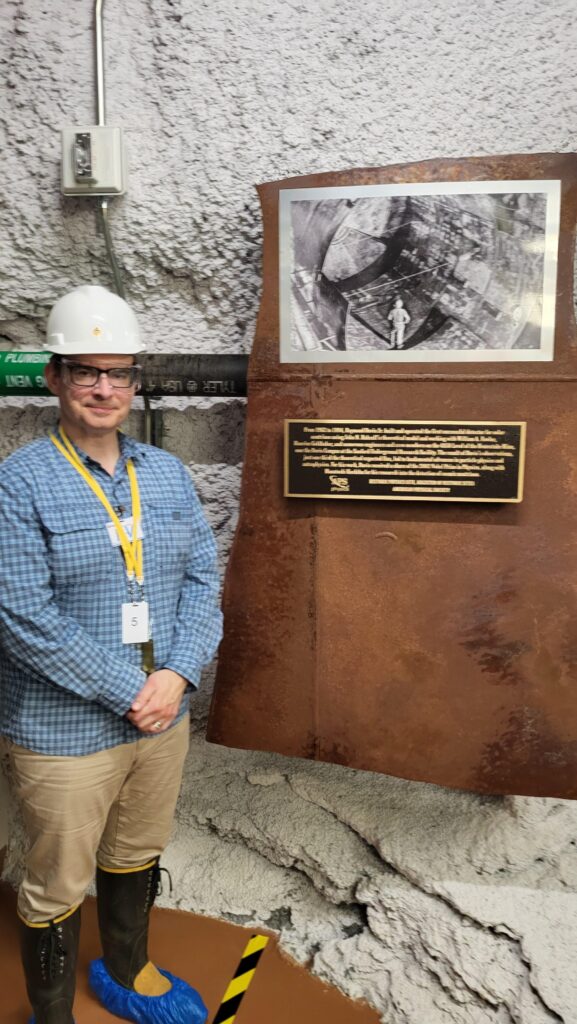
Return to Surface
We returned to surface on a late-morning cage. The cage at SURF runs much slower than the one at SNOLAB, owing to the fact that SURF is not an active industrial site … and so time does not equal money in the same way it does for an active mining operation. At SURF, they mine only science. Their cage takes about 10 minutes to make the 4850ft journey. At SNOLAB, the cage is operated by the host mining company and runs to 6800ft in about 4 minutes.
The cage ride is rather damp, especially in the morning, as they intentionally rain water down on the shaft support frame. The frame is made from wood and the water prevents dry rot. It sounds like and looks like it’s raining around and in the cage as a result.
We toured the hoist room of the Yates Shaft and got a great look at the mechanical and electrical systems that make these cage rides possible.
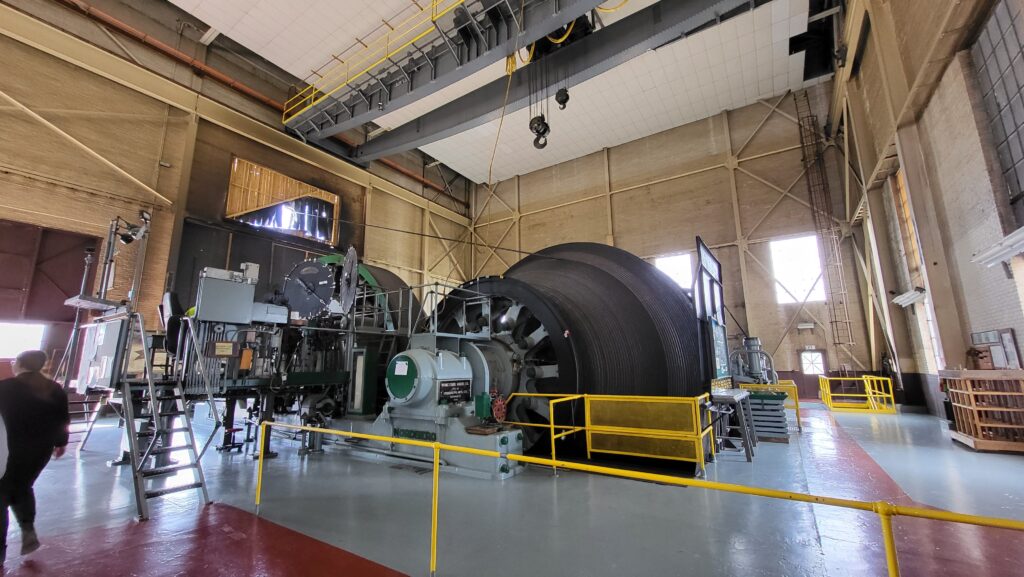
It was beautiful in Lead for the days we were there. While temperatures plummeted the morning we left for home, we had otherwise blue skies and warm days on our journey. This was made even warmer by the wonderful people of SURF and Lead. Lead is truly a science city, one that has embraced its transition from a mining town to a science town.
The expressions of warmth and friendship were cool, clean water in what can often be the hot, noisy and unfriendly desert of the modern geopolitical landscape. Scientists and scientific staff have a vital role in maintaining the backbone of societies, but this hard work can be done simply through exchanges of ideas, common fellowship, and shared meals. These small things are the bricks that build better futures for the rest of the world, even if the rest of the world seems more interested in demolition than discovery.

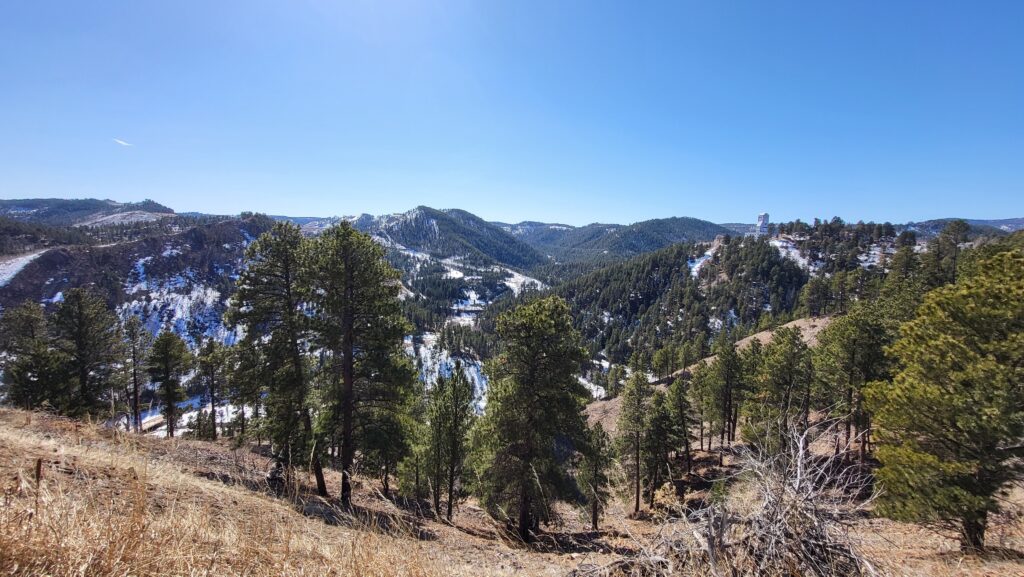
Returning to Sudbury
The public lecture went exceptionally well and that is discussed in an earlier post. Of course, it was another 2-day journey back to Sudbury and I was tired, but in a good way. After seeing the warm, but snow-coated, mountainsides of Lead, it was definitely a feeling of “coming home” to see the snow fields of Ontario.
